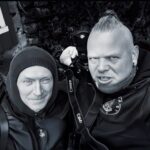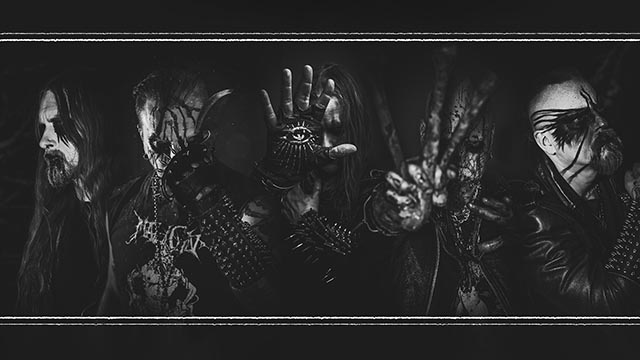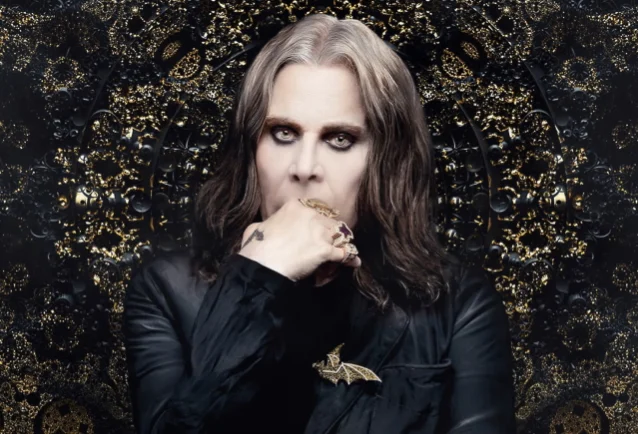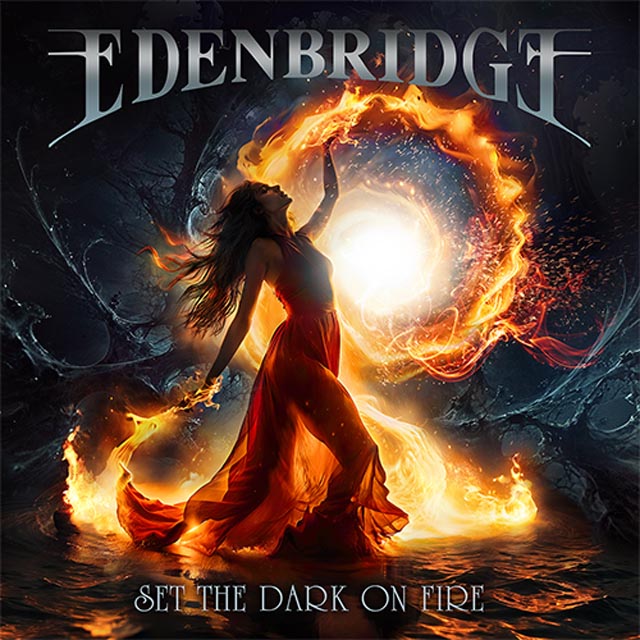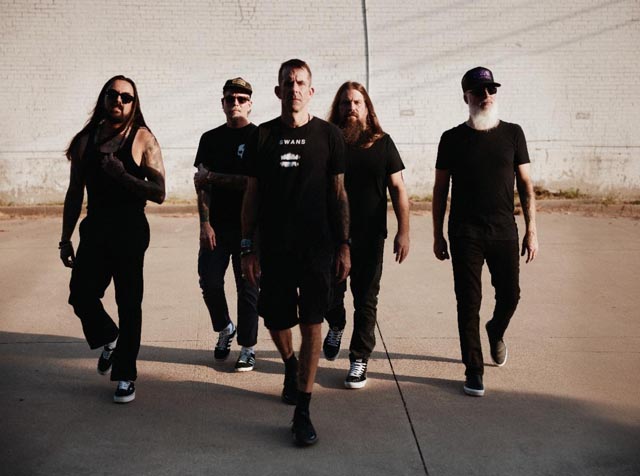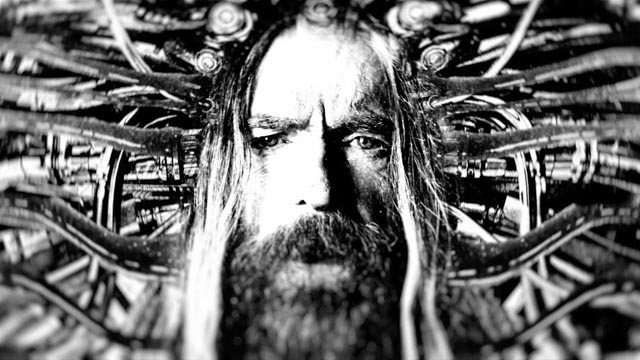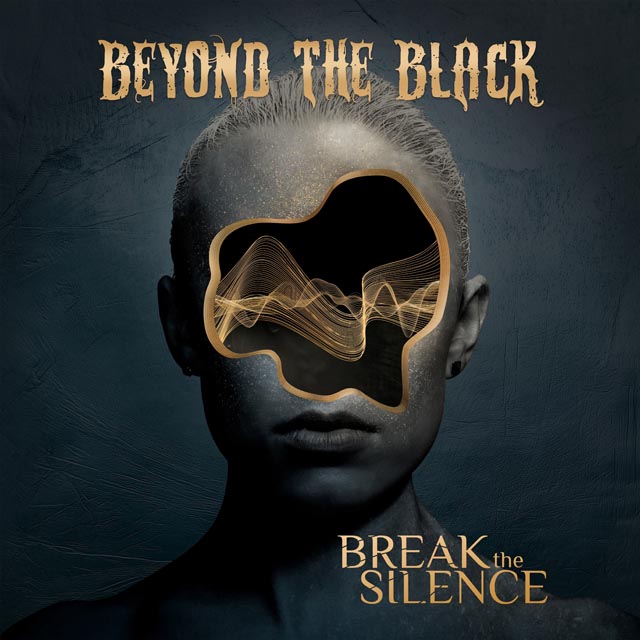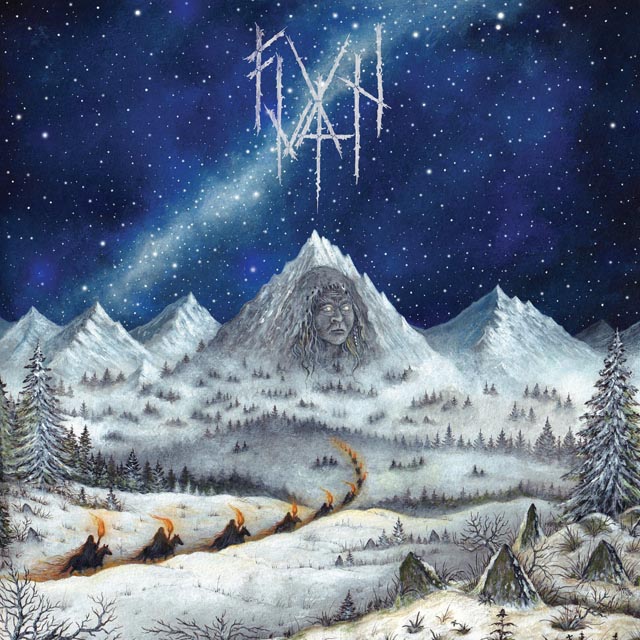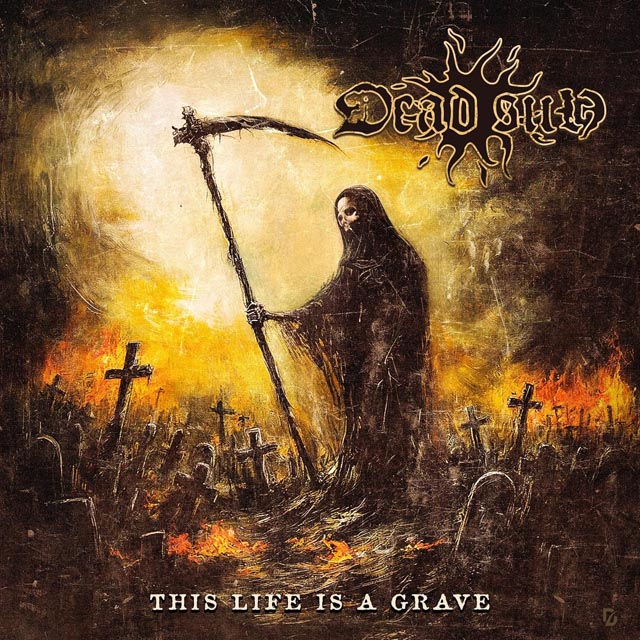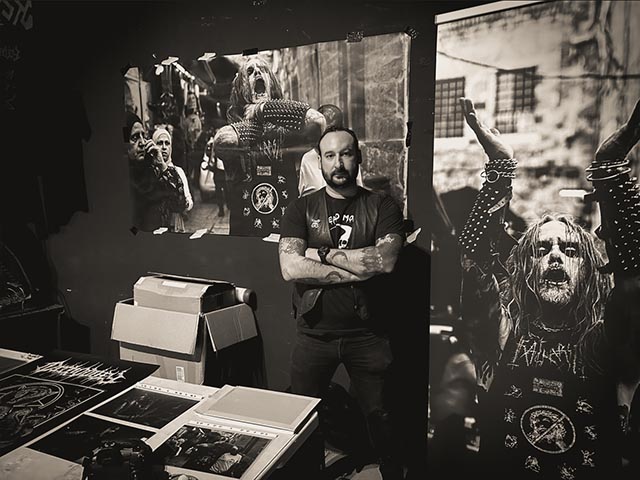
Photo Credit: NecrosHorns
Sweden’s awarded Christopher Dean, a.k.a. “NecrosHorns,” has established himself as a leading black metal photographer. In fact, without the slightest hesitation, I would say that NecrosHorns is the best in his field. Both in a figurative and literal sense, he brings more fire than anyone to his profession: “I’m a photographer, not a graphic designer, so if you want fire, we are going to burn this place.” Verily, unlike the majority of supposedly dangerous bands, NecrosHorns will take any risk for his art, making him the true rock star. He also sets the gold standard with his superior work ethic.
NecrosHorns has photographed an endless list of legendary outfits, such as Nifelheim, Taake, Urgehal, Carpathian Forest, and Kampfar. A ridiculously in-demand artist, NecrosHorns constantly receives invitations from around the world to capture festivals, present exhibitions, and achieve top-notch photo shoot results. Notably, the day before the violence erupted in Israel in October 2023, NecrosHorns snapped a series of images titled “The Omen…” immortalizing Wraath of Darvaza in the Via Dolorosa. The pair had wandered outside of Tel Aviv after participating in the country’s first-ever black metal festival, Black Night Sorceries MMXXIII. The resulting images have already become iconic. Musicians, fans, and prominent members of the black metal community immediately began weighing in and describing “The Omen…” as the most dangerous shoot in the history of the genre.
Any conversation with NecrosHorns is bound to prove incredibly rewarding and enlightening. Without further ado, we present our interview with the man himself.
Thank you, NecrosHorns, for agreeing to speak with me. It’s always an honor and a pleasure. We have to begin today with “The Omen…” because that’s clearly one of the greatest and most important shoots in the history of black metal. One fan commented that it should receive a Nobel Prize, and, yes, I wholeheartedly agree. It has already provoked a huge response from the black metal community. We’re seeing it everywhere right now — all over Instagram; on jackets; walls, including mine and that of the famous Morbid Impalement Tattoo Studio; etc. However, in a way, “The Omen…” is still too far ahead of its time. Although it couldn’t be more relevant right now and has massive significance beyond the extreme music scene, I don’t think the world is ready for it. The proof is that the first image released definitely seems like a Time magazine cover photo, and yet newspapers didn’t pick up on it. I do think that “The Omen…” will get the mainstream attention that it deserves one day though.
What I can say is that the photo created a “before” and “after” in my career. I was already known for my work before, but “The Omen…” marked, let’s say, the peak of my career so far in a way. I don’t put titles on myself, but people label me as a really extreme photographer for taking the risk of going to this place to do something that we could have gotten killed for. It’s a really controversial photo. I mean, I would say that 99.9% of people like it and respect the meaning of the photo. But there is always going to be someone around saying, “You guys are just playing around. Nothing would have ever happened there.” The people who are saying that are the people who haven’t been there and haven’t experienced the tension of being in a place like that. “The Omen…” is a photo that many people have mentioned will go down in the history of black metal. They have said that it’s the most risky photo ever taken in the metal scene because, again, we could have been killed or arrested for being there and doing what we did. There are so many things that could have gone wrong during that photo session.
The reception has been really positive. Unfortunately, I don’t really think we’ll ever win a prize for it because the rest of the world is not ready for that yet. Black metal is not something appreciated by outsiders. They still see it as a taboo, as something negative to society. No, black metal is not the most morally correct genre of music because black metal is not only about music — it’s about a lifestyle. It’s about rebellion. It insults the core of most religions in the world. For example, in a Catholic country, that photo will never be accepted. The same thing in a Muslim or Orthodox Jewish country. So, it’s a photo that has created a lot of controversy. There is a photographer from the United States, Andres Serrano, who did a photo called “Piss Christ.” He actually put a crucifix inside a tank with his own urine. He took a photo of that. That photo, for example, would be totally hated in the Christian community. But the thing is that with this photo, we attacked everyone. A lot of people got angry because they felt like we went to the Holy Land and we did something blasphemous, but, at the same time, that was the meaning of the photo — we’re free, we don’t care, we do it. Take the risk! But, yes, inside of the metal community, people have given a lot of really positive feedback.
When you look at it, Jesus was a rebel — he was someone who really polarized people and stirred things up, and that is exactly what Wraath is doing. So, maybe Wraath has more in common with Christ than most. From a psychological perspective, it doesn’t matter what you believe in, this should still be an interesting photo because it shows the clash of different lifestyles. Even if you’re a Christian, it should be fascinating to see a Satanist risking his life by walking through Jesus’ death route. So, “The Omen…” provokes a lot of thought, but I guess not everyone is willing to think. But for the benefit of those who are, you just went to Spain with Darvaza. You unveiled part of your 10th-anniversary exhibition there. That included two photos from “The Omen…,” one of which had never been seen before. It’s crazy when you reflect that “The Omen…” happened right before your decade milestone. So, anyway, what would you like to say about your experiences in Barcelona and Valencia?
It was the first time that I toured with one band, going around and documenting. It was a really interesting experience. I’ve known all of the guys for a really long time. They’re really good friends of mine. So, it was fun. People started calling me the personal photographer of Darvaza. I was like, “I’m not the band’s photographer, but I have a close relationship with them.” I also documented them when they were backstage preparing themselves. People said to me, “They must trust you to be able to be there and document this.” Yes, they trust me. We work together, so there’s a level of respect. They wouldn’t trust me to be there if they felt that I wasn’t really part of the group in a way — I’m not saying part of the band, but I’m saying that I’ve been well-received. Of course, it’s a private moment, so many people don’t really want outsiders there or anything. So, it was a good experience.
One of the main reasons for documenting the trip was for my 10-year anniversary exhibitions that I’m doing this year. I wanted to show off part of the main part of the exhibition, “The Omen…” photos in really big prints. I just wanted to share them for the first time as part of something related to Darvaza. It was well-received by people in Barcelona and Valencia. The feedback was really good. It was really cool to see people coming and knowing who I am and excited to have me there. I was really surprised — when people went into the venue, they were asking right away, “Is it okay if I take a photo of you with your photo?” So, people were queuing to get photos of the exhibit. People really wanted to stand in front and get a photo with me and tell me how much they appreciate it.
I was really surprised because the metal community is way smaller in Valencia. It’s not like Berlin, Oslo, or Stockholm. Many artists generally only want the big cities because that’s where you will get the most exposure. I always say, “I don’t care if it’s a big city or a small city. There are metalheads all around the world, and these people should have equal opportunity that someone in Oslo has.” So, I actually really appreciate being in a small place sometimes because you get people who appreciate more that you’ve made the effort to be there. Many people came and thanked me, “Thanks so much for being here.” I’m like, “My pleasure! You don’t have to thank me. I’m really thankful that you like that I am here and that you’ve received me in such a positive way.” Overall, the experience in Spain was really great but really intense — a lot of work, a lot to do, a lack of sleep, a lot of challenges. But it was a really great thing to do.
The three-day fest Hell’s Heroes in Houston is coming right up starting on March 21. You did your pilot training in Houston, so it’s really cool that your first US photography show will be there — you’ll present your full 10-year exhibition for the first time as well as your tenth book, 10 Years of Blasphemy.
For me, actually, it’s pretty exciting. It has a lot of meaning because many people have been asking me for a long time to come to the States. Now, I’m going to finally do it. This is going to be my first time there as a photographer. It is a really big step in my career. I’m really excited about that. The festival is huge. I hear that there were 4,000 tickets. At least 80% of the festival is already sold. It’s going to be a really intense experience. The support has been incredible. I wanted to do something special for the people in the United States who, again, have been asking for a really long time, “Come here, please. We’ll come to see you. We don’t have the opportunity to travel outside of the United States for economic reasons or whatever.” I just wanted to pay back the appreciation by giving them the chance to be the first ones to see my 10-year anniversary exhibition. There are many photos that I haven’t shown before in an exhibition, so it’s going to be something pretty big to have them there. I’m still planning how to do everything, but I’m really excited to also be shooting at the festival. So, it’s going to be intense. Three days of no sleep and running everywhere. I’m actually just trying to gather my energy back after two weeks on the road. Now I only have five weeks left, so I need to focus and bring the best of what I’ve been doing over the past 10 years. The feedback online has been great, so I’m excited to see what happens.
10 Years of Blasphemy is a book that mostly follows my artistic career step by step — the different things that I have done and presented. It’s a compilation of photos of my work from day one until now, including when I started NecrosHorns — it was not about photography then. Photography was always a dream of mine. I’ve always been open about this — NecrosHorns is not about a specific medium of work. It’s about a dark part of myself. It’s what I feel at the moment. Who knows if I decide to stop pursuing photography and go for something else. I don’t know. I don’t think so, but that’s what I feel right now. NecrosHorns started with wood art and blood painting, so, again, I’m showing the journey from the beginning — some of the work that has huge meaning for me. The book includes travel photography like what I did when I visited India, Nepal, and Thailand. It also has some behind-the-scenes photos like from “The Omen…” shoot. I released a book called A Journey Through Death. It has some photos of ossuaries that I shot before. So, 10 Years of Blasphemy is not only a compilation of concert photography or all about photo sessions.
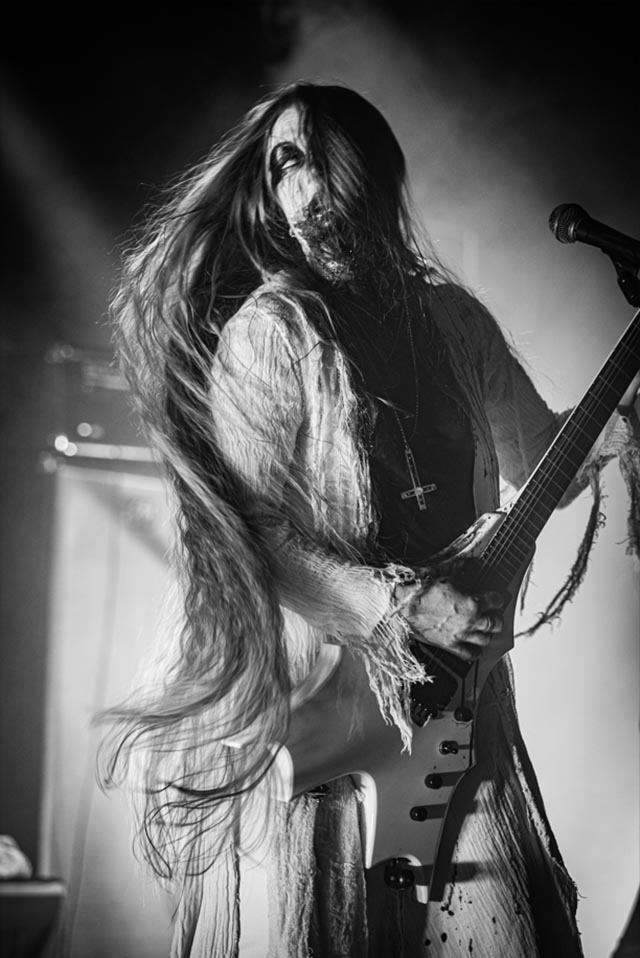
Photo Credit: NecrosHorns – Darkened Nocturn Slaughtercult live House of Metal Umeå, Sweden 2020
If I understand correctly, 10 Years of Blasphemy will include both what you’ve done under the NecrosHorns banner and as Christopher Dean? For those who don’t know, your travel and architecture photography is published under the Christopher Dean name. As Christopher Dean, you have repeatedly been named as one of the top 10 photographers in Stockholm and the top 35 in Sweden.
My work as Christopher Dean is related in a way. I included what I feel is done in a dark approach — photos of ossuaries, catacombs, or what has been the journey in India or Nepal. So, there are things that actually have indirectly influenced my career as NecrosHorns because NecrosHorns, as I said, is a part of myself that I portray through art. It’s about who I am as a person, about the part that I don’t really show or open to others. What I do as Christopher Dean, as my real name, also has a direct and indirect influence on NecrosHorns for sure because, at the end of the day, it’s me. It’s the same person but different personalities — it’s Dr. Jekyll and Mr. Hyde. NecrosHorns is my alter ego that influences my behavior. It’s like exercising my demons.
Yes, no matter what you’re taking a picture of, your vision is behind it, so the photos bear your artistic trademark and relate to one another. Even if one of your travel photographs isn’t literally black metal, it could still be the epitome of black metal. When you’re on the road with bands, do you manage to take travel photography or not really because if you have extra time, you will do a shoot with musicians?
I always try. If I have the chance, I just do it right away. If there is a scenario that I would like to do, I definitely will. I’m open-minded. When I’m traveling by myself and building my own schedule, I include everything. But when I was traveling with Darvaza, I was not in control of anything. I didn’t even know the hotel where I was going to sleep. If you ask me the name of the hotel now, I don’t even know. I just went there to sleep three hours and left. Sometimes, I’ll sneak a photo or two of something else because I’m always aware of the environment. If I have the opportunity, yes. But when I’m shooting with a band in these circumstances, I’m focused on the work that I’m doing at the moment. My mindset is on that. So, when I was traveling with Darvaza, my mindset was Darvaza.
On the topic of Darvaza, you obviously continued to shoot Gionata Potenti, or “Omega,” of Darvaza and Kommander L., who stepped in on live bass, the day the violence broke out in Israel. So, when you were on Iblis Manifestations with Shayan of Trivax for the second time, you mentioned that you were running into shelters all the time and that things were extremely-extremely dangerous. You even received word that 1,000 terrorists had crossed the border. I think that readers should definitely hear about that day because the details are really fascinating and speak to your incredible bravery.
Gionata was staying in a different hotel than me. We didn’t know how the situation was going to escalate. We talked before about going to the Old City in Tel Aviv and doing some photos for Nubivagant. The first attack started at 7:30 in the morning, and the situation flared up again like around 10:00 in the morning. But then after that, like around 11:00, everything got sort of calm. Gionata wrote me, “Hey, let’s go out to shoot.” I was like, “Well, I don’t know. Let’s see how it goes.” I just looked outside of the hotel, and I saw the military everywhere, helicopters and things, but I still didn’t know what to do.
Then I saw after an hour that everything looked calm. “Let’s go out! Let’s do it!” It was a really hectic situation. We were actually in the Old City just walking around searching for the spot where we could shoot for Nubivagant — helicopters flying everywhere, military still going around. So, it was a really dark, really weird feeling to shoot knowing that any moment rockets could fly again, and we would have to find a way to shelter or something. I mean, at like 5:00, someone approached us to say, “Hey, you have to get out of the streets because there’s a lockdown.” So, I told Gionata, “It’s time to get the fuck out of here. We’ve shot enough.” Yeah, it was a really weird and crazy experience knowing that anything could happen at any moment.
Obviously, you’ve worked a ton with Wraath. You haven’t only photographed him with Darvaza, but you’ve captured him with Mare and Ritual Death…
I shot him when he was a guest with Fides Inversa. I shot him also with One Tail, One Head, but, before “The Omen…,” it was always when he was onstage, never a photo session. I have a huge amount of respect for him as an artist, not because he’s my friend. I always felt that I wanted to collaborate with him. I wanted to do a photo session. When he is onstage, yeah, I’m capturing and documenting, but it’s not really like I’m controlling in any way or telling him, “Hey, stand up here. Or do this!” It’s not really like him and me. It’s actually me capturing what he is doing. A photo session is more personal because we have to be synchronized. We have to be connected to what we are doing. It was kind of an interesting thing because the first session that we did was like the most intense photo created in the history of black metal. I told him after the session, “This is the first thing that we have done together. I’m afraid of what is going to be next.”
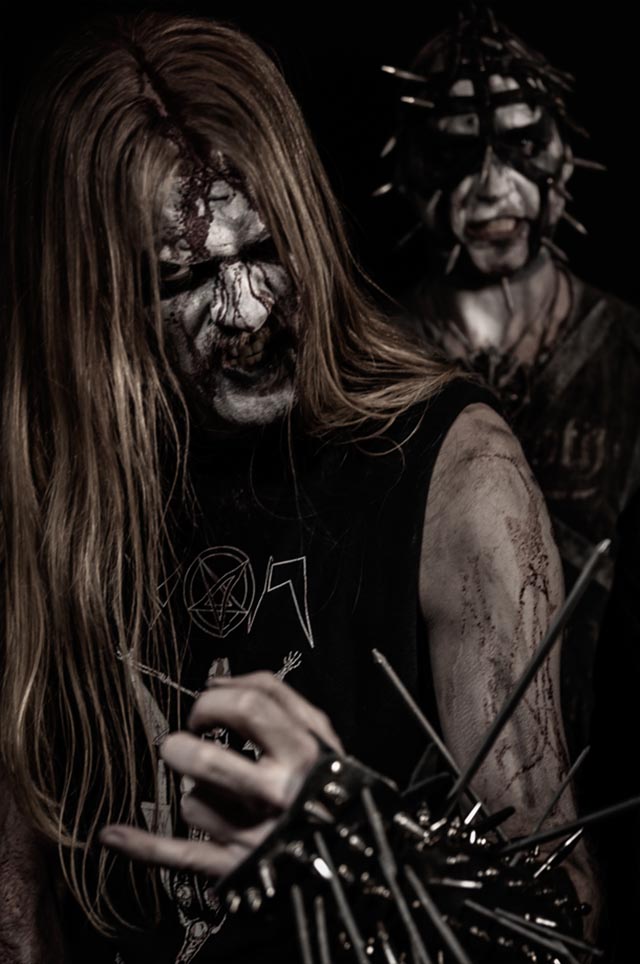
Photo Credit: NecrosHorns – Urgehal session
I think it’s great that “The Omen…” happened between the two of you because you are the most respected black metal photographer right now, and my opinion has basically always been that Wraath is one of the greatest and most fiery black metal frontmen. People who know black metal appreciate the full importance of both of you as artists. Sometimes, however, those outside of the black metal community or new to it need time to learn these things. I would like to see you and Wraath become even more recognized, and “The Omen…” should help. So, speaking of dangerous situations, it’s my understanding that at Never Surrender last year, you were almost killed by a falling giant pentagram.
Not almost got killed, but actually it was kind of a fun situation. They had this big wooden pentagram in front of the stage. Bastian, Hagzissa’s singer, he’s a really energetic person onstage. He has such a wild energy. He grabbed the mic, and he just lifted it. He said later that he only wanted to push the pentagram a little bit, but he went too hard to the point that he broke it, and it fell down. Perfect timing — I’m exactly in front of the pentagram. I see it in slow motion coming toward me. I’m like, “Fuck, my life!” I just had enough time to take my camera with one hand, move it to one side, and grab the pentagram with the other hand. There was a lot of barbed wire all around the stage. It was just for aesthetics, but it was real. Everything went down with the pentagram. It fell over my feet. Then I tried to move. That thing was like a net — the more you move, the more tangled you get. So, I got all wrapped up in that. I got stuck. Then I managed to push the pentagram down on the floor, and I was really trying to get out, but the wire got stuck in my boots, so I couldn’t really. Then other people like the stage manager and other photographers came and started helping me try to get out. I was still holding the camera in one hand.
After the concert, Lukas, the drummer, was like, “What happened? Everyone was gathering in front of the stage.” Since he was wearing the mask, he had tunnel vision. He probably couldn’t see to the sides or see properly. But I was like, “Yeah, I got trapped in front of the stage with all the wire.” He was like, “What the fuck?! Really?!” Bastian came, and he apologized, “I’m sorry about that.” I told him, “You have nothing to apologize for. I don’t care. That’s what it is.” As a photographer, you have to be prepared. I would not really complain about something like this. It was an interesting experience really to get trapped in front of the stage where I was shooting. I didn’t get hurt or anything. It could have gone wrong because the pentagram was big, but it went well!
You have done countless phenomenal photo shoots, but I would like to hear more about your work with the black/thrash band Hild in particular. For those who don’t know, Hild is the project of ex-Marduk’s Lars Broddesson.
I have to say that was a really special shoot. It was for their upcoming album. I’ve known Lars for years already, but we’ve never really shot together. I covered Hild’s first concert at Mörkaste Småland Festival two years ago. When I met him last year in London, I was like, “Hey, if you do a photo shoot at some point, let me know. It would be pretty cool to work on something.” And he was like, “That would be a good idea. What do you have in mind?” I was like, “Well, you have the Nordic theme in your band, so let’s do something really Nordic. Let’s go to a place where you have this kind of Nordic feeling — an ancient place, a burial ground, where you have this energy, and we can capture that essence through the band.” He just answered, “Fuck, I’m getting goosebumps.”
We stayed in touch. Later, we talked about it. I told him about this place that is called Anundshög. That place has a stone ship from the Bronze Age in front of the biggest burial mound in Scandinavia or definitely in Sweden. I love that place in general. I’ve photographed the place and stone ship many times. When we arrived there, it was really cold. It was zero or minus ten degrees. We got prepared to do the photo session, and they poured blood over themselves. The blood was cold as fuck. It was interesting because they had like a leash to splash the blood instead of doing it with their hands. Lars just stood in front of me and released all of this energy. He just screamed into the air really loud. I was just capturing him in the photo session being himself and filling the energy of that place. So, it was a really powerful thing. After that photo, even though it was really cold, he was like, “Fuck, I’m feeling warm now.” I like photos that have a story behind them. It was a challenge for me. It was a challenge for the band. It took around two hours.
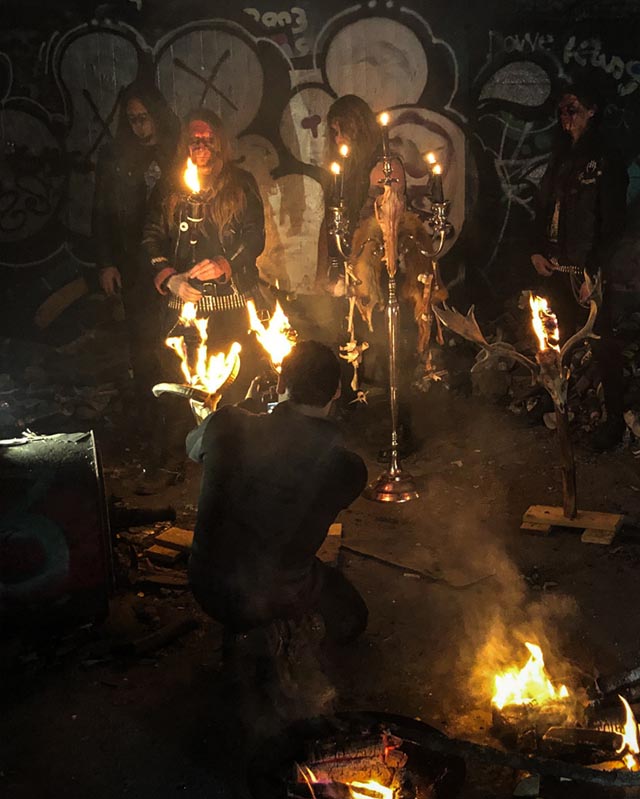
Photo Credit: NecrosHorns – Behind the scenes Anguish photo session
In the past, we’ve discussed that you’re not afraid to play with fire, as evidenced by your sessions with bands like Ondskapt. Do you think that your experience as a pilot has made you more willing to take risks or do you think that you’ve always had that risk-taking component in you, which is why you initially chose that profession?
I’ve always been a person who challenges myself. I always like to get out of my comfort zone. Aviation was something that actually forced me in many ways to push myself to limits that I never really thought that I was capable of reaching. So, aviation changed my perspective a lot. In a way, it probably opened up more possibilities for me to challenge myself now through photography and in life in general — to take risks that the average person wouldn’t really dare to for reasons like being afraid of getting sick or even killed. So, it’s not that I’m really trying to get myself killed, but I feel like aviation has probably influenced my behavior. I’m a risk-taker. I was before aviation, but aviation pushed me to the point that made me an adrenaline junkie. I feel like I need the euphoria and what it creates in you. I don’t do drugs, so I don’t really need that kind of kick, but I need the inner kick of being in a place where I feel that I could be in danger. It’s not that you become afraid, but you get such a rush that your body just starts shaking after. I need that feeling in life, even though I’m kind of a calm person. That kick that makes me feel like I’m alive.
As you mentioned, when NecrosHorns began, your expertise was wood art with blood painting, acrylics, and pyrography. In the past, we’ve discussed that the blood painting came about because you accidentally cut your hand, then the blood got on the wood, and you realized that it looked really cool. Do you think that you’ll go back to wood art while keeping up with your photography?
For a while, when I started my transition to photography, I was doing both things at the same time. The situation is that both take a lot of time, and time is not something that I am lucky to say I have plenty of. I regularly work from Monday to Monday from 6:00 in the morning until midnight, sometimes even longer. I can’t include more things in my schedule because my days are not long enough. I stop working at midnight, not because I’m done for the day but because it’s kind of enough for the day. But sometimes, I’m answering promoters at 2:00 in the morning, posting photos, or working on photos. My sleep time is very little. I suffer from insomnia, so I manage to do more than the average person. When I’m awake, I don’t procrastinate. I’m actually really active all the time.
I stopped with wood art, not because I wanted to but because I lacked the time for it. It came to the point where I had to choose a path. Should I continue with this, or should I continue with that? I mean, photography was always a dream. It was kind of a really big risk because people knew me before because of my wood art, and I decided to choose something else that was not really my main focus. It took me out of my comfort zone, but NecrosHorns is way bigger now with my photography. If I have the time, I would love to get back to working with wood, but I don’t right now. I cannot really say for the future. Who knows?! As I said, NecrosHorns is what I feel. It’s a part of myself. It’s not about a specific medium.
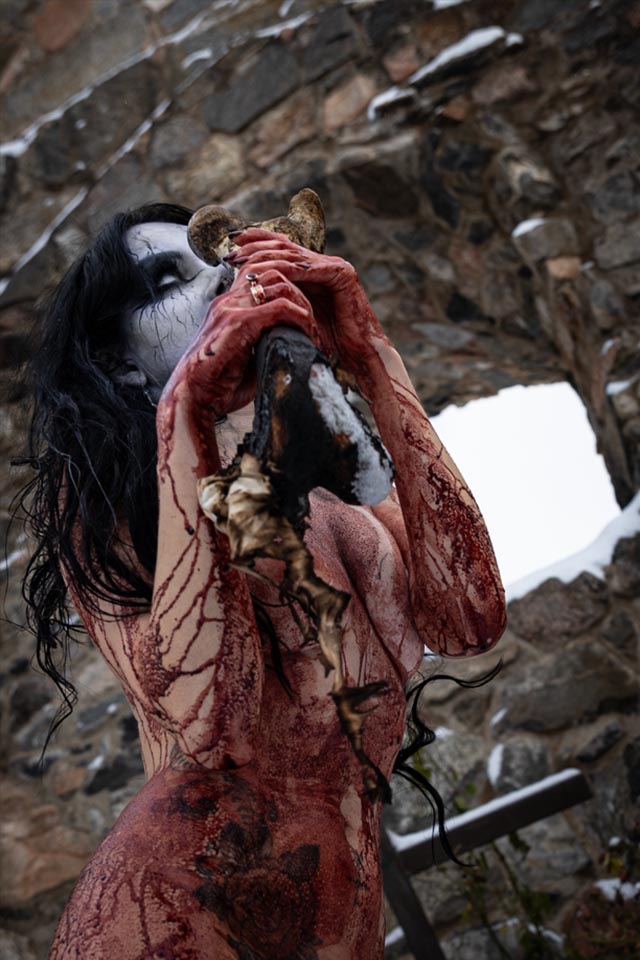
Photo Credit: NecrosHorns – Dark Femininity session IV with Ausrie Fel
You said that NecrosHorns is about what you feel at the moment, but I would still like to ask: You’ve already accomplished so much, so what do you hope to achieve in the next 10 years of NecrosHorns?
Right now, I’m really focused on photography, so my main goal is to keep going with photography. It’s what I would like to do. This could sound arrogant or pretentious, but that’s not the meaning — I want to elevate photography inside the black metal scene or the metal scene in general… but not only metal because I listen to many things. So, what I want to do is raise the bar. I don’t want to sound like I’m diminishing the work of other photographers. I appreciate the work of others as well. However, I feel that in the metal scene, there is a lack of a really strong passion for showing work and taking risks as a photographer — the things I want to show to the world. I feel that I’m doing that right now with what I did with “The Omen…” I don’t want to be the photographer who lives my whole life off the success of just one photo. I want to create more. I want to document more. I want to reach places like I’ve never been. I want to have the opportunity to have an exhibition in Asia. I want to have the opportunity to go more to the United States. I want to show my work more around the world, even if this means that those outside of the black metal scene will criticize me. I don’t care.
I’m not here to please anyone, but I want to show my work and show the world that this exists — that there are unique people in black metal who are willing to take risks, and this is not only about posing in front of a photo or just making music in your apartment or in the studio. This is a lifestyle. I want to show the world that this is a way of living. In underground hip-hop, for example, you don’t just go there and sing one song. You have to be there. You have to feel it. It’s kind of the same thing with black metal. You are unique. It is not just that you just buy a guitar and start making music and being cool. No, this is not about being cool. This is about something bigger than yourself, and I want to create something bigger than myself. I hope that in the next 10 years, I will be able to achieve that.
As much as I respect the black metal community and consider myself a part of it, yes, you’ve really brought artistry to the scene that has been greatly lacking elsewhere. You’re inspired by things like fashion photography and clearly have a much more elevated approach. Just so that readers don’t form the wrong impression from what was said, I’ll repeat that you obviously have countless other remarkable photos besides “The Omen…” I, for example, was a fan of yours long before that. From your work, we see that capturing the individual essences of the musicians that you collaborate with is part of your strength, and you do that unlike anyone else — that owes both to your genius and the fact that you always build a proper connection with the bands you shoot. That has basically meant that your photos are the most memorable. So, looking back at your career, what have been some of the most rewarding aspects?
I posted a photo today and mentioned being thankful to everyone for their support for what I do. I come from Panama. There isn’t a metal scene in Panama. I was an outsider when I came here to Sweden, and I was just like one guy who liked metal. I wanted to go to a concert. When I had the opportunity to move to Sweden, I started going to almost every single concert that I could because, for me, it was a dream since I was younger. I posted about the fact that my dream was to see only one band that I liked, only one, and I would have been happy.
Nowadays, I work with almost all of them that I like. Sometimes, we haven’t even worked together yet, but they already know who I am. So, the moment that I meet some of them, they tell me, “Hey, I know about your work. I know about your photos.” I don’t really do this to get recognition from anyone, but it makes me feel really good that I have come as an outsider, and I have been able to gain some status. And now, I have been around the world traveling to different events, to different festivals, different concerts. Those who work with me, bands that have inspired me before, now I’m inspiring them. I’m giving my vision in their photo sessions. They trust my vision. It’s something that I never would have thought before. The bands ask me, “How should I stand? Where should we go? What shall I do?” I just get like, “Hey, you are the guy here, not me.” But the fun thing is that when they book me to do these photo sessions, they’re not booking someone to take a photo, again, they’re booking my vision as well. If people would have told me when I was a teenager discovering Marduk for the first time, “One day you will be shooting Marduk,” I would have told them, “Fuck off, you’re bullshitting me.” And now, I’m doing it. So, that’s a big reward for me. That’s probably the biggest highlight of my career so far — to look back and see where I was and where I am now.
And people view you as an honorary member of Cult of Fire, for example. I certainly see you as a member of Darvaza — I can’t think of Darvaza without thinking of you.
First of all, I appreciate what you have said about this. It’s kind of interesting because I have built a close relationship with some of these bands, so it has come to the point where people see me as part of the band. They actually think whenever a band is playing somewhere, “Oh, NecrosHorns is going to be there with them!” It’s not the case, but I wish it could be like that.
Are there any topics that we didn’t cover that you’d like to discuss?
If nowadays as an artist you haven’t been canceled, somehow you are doing something wrong.
Yes!
If in black metal you haven’t been canceled, somehow you are doing something wrong. Then you should look at yourself and feel like, “Have I really been carrying the flag of rebellion or not? Have I really been true to myself, or have I betrayed myself to be somewhere or be part of something? Am I just pleasing everyone?” It’s normal to get canceled. It’s normal to stand for your ideals. It’s okay not to bow in front of anyone just to please someone else.
I couldn’t agree more! Thank you, NecrosHorns, for your art and a fantastic interview!
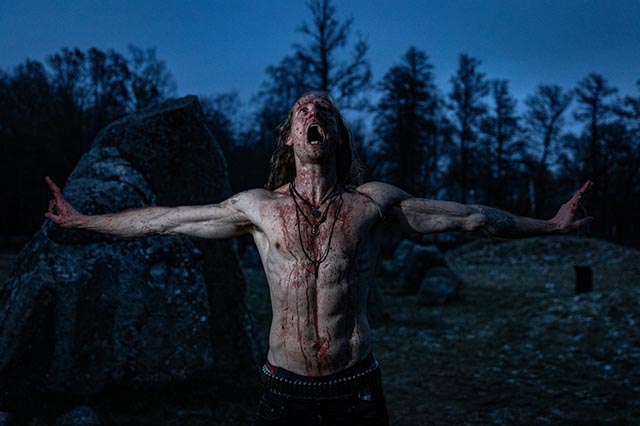
Photo Credit: NecrosHorns – Hild photo session

